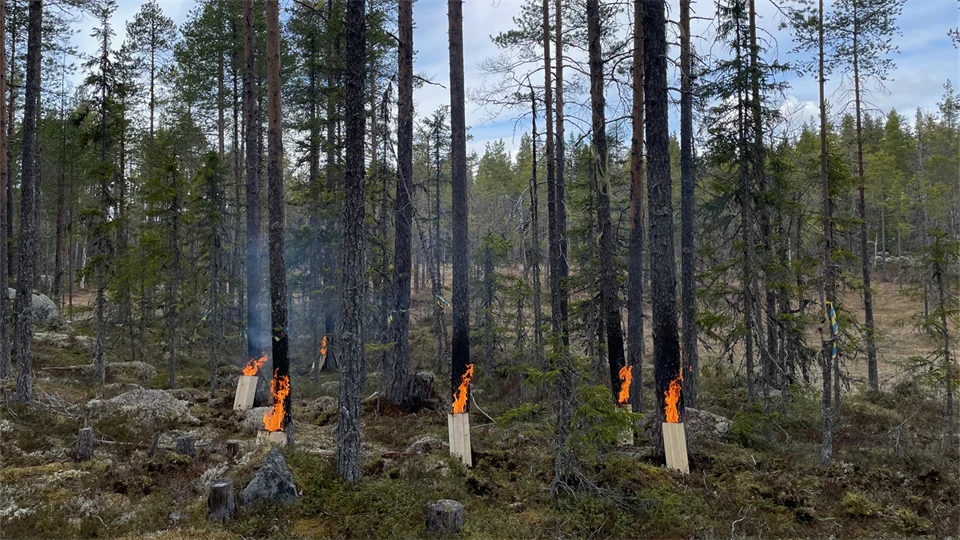Stem‑base burning as a conservation management method in pine forests
Wildfires shaped boreal pine forests for millennia, but today they are rare. Stem-base burning is a new conservation method that mimics natural fire damage by scorching living pines. The project tests whether this technique can create resin-rich, fire-damaged wood that supports threatened beetles.
Wildfires have for thousands of years been a natural part of boreal forest dynamics and are crucial for maintaining its biodiversity. Fires have created unique habitats, such as fire-scarred pines and resin-rich dead wood, on which many threatened species depend. However, over the past 150 years, wildfires have become rare due to effective fire suppression and changes in land use. As a result, many species adapted to fire-influenced forests now struggle to survive.
To restore fire-influenced forests and support fire-dependent species, prescribed burning is today carried out in reserves and protected areas. This method is effective but costly and often not practically feasible. Therefore, alternative techniques that mimic the effects of fire have begun to be used. One example is girdling, where living pines are stripped of bark to create resin-rich wood. A new method that has attracted great interest from forestry companies and authorities is stem-base burning (point burning), in which small fires are lit at the base of trees to scorch the bark and heat the wood, creating so-called fire scars, a type of damage that normally only occurs during natural wildfires.
This project aims to evaluate stem-base burning as a conservation management method in pine forests. We will investigate whether the method has advantages compared to traditional girdling in terms of producing resin-rich wood and creating suitable habitats for threatened wood-living beetles. The results will also be compared with naturally fire-damaged pines from prescribed burns.
The project is important for developing effective and sustainable methods that can be applied where large-scale prescribed burning is not possible. The results are expected to contribute to the preservation of biodiversity that depends on fire-created habitats. In this way, the project supports sustainable forestry and promotes more knowledge-based and effective conservation management of boreal forests.
Facts
Project period
250401—280331
Subjects
Research groups
Project leader

Project members



